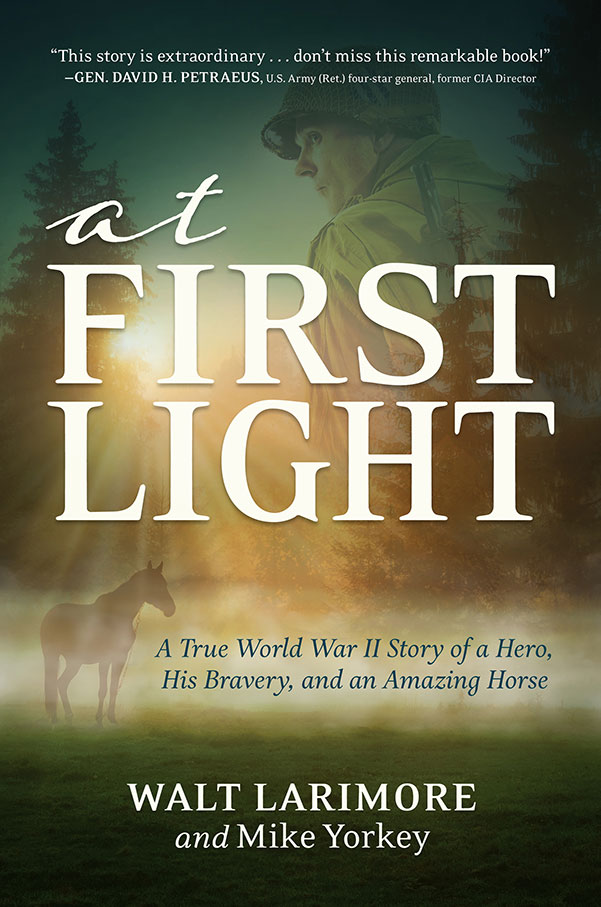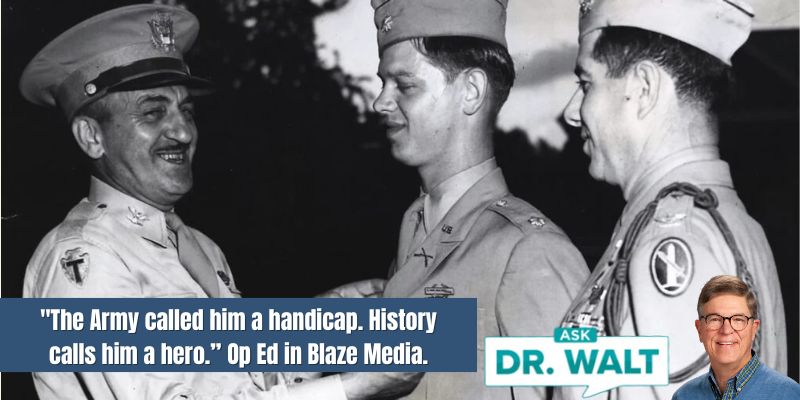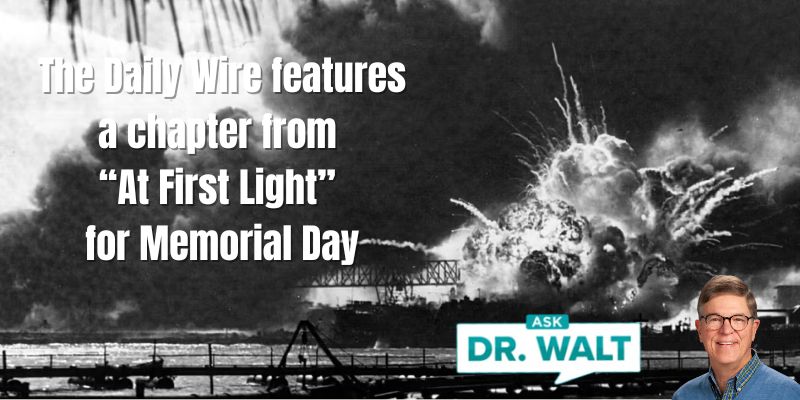
August 29, 1944 – One of my Dad’s most memorable equestrian missions of WWII – Part 1
August 28, 2024
August 31, 1944 – One of my Dad’s most memorable equestrian missions of WWII – Part 3
August 30, 2024A THRILLING ROUNDUP — “Rider and horse…each is totally reliant upon the other. Each is the selfless guardian of the other’s very well-being.”[1]

While looking for horses under Colonel McGarr’s order, Phil and his team first found six hitched to a large artillery piece. Four horses were dead, and two were still alive. The driver had been killed, but he still had the reins in his hands.
Phil approached the two draft horses at the front. They were dehydrated. Their tongues were dry and cracked, and their breathing was rapid and shallow. Phil gently rubbed the horses’ noses and then poured water from his canteen into his hand, letting each horse thirstily slurp the refreshing fluid.
Phil could see the suspicion in their eyes diminish. When he walked around the pair, however, his spirit sank as he inspected their hindquarters. Each horse was severely wounded from shrapnel. Upon closer examination, Phil was horrified to see fly-covered intestines hanging out of their abdomens. The wounds sealed the horses’ fate. No wonder their haunch and back muscles were quivering.
Ross walked up to Phil. “These two need relief?”
Phil nodded. His lips pursed, his eyes misted. “Gorgeous drafts, Ross,” he said softly as he wrapped his bandana around the eyes of one of the horses. Ross did the same with the other mount.
Phil looked over his shoulder to his men. “Come on up, guys. Given the number of wounded horses we’re likely to see, I want you to know how to do this.”
As the men walked up behind him, Phil reached into his pocket and pulled out some bullets. “These are soft-nosed.[2] You want to use them instead of one encased in a full metal jacket.”
Phil knew from his days on the farm that if done correctly, a shot to the horse’s brain was a reliable, instantaneous, externally bloodless, and humane way to put a horse out of untreatable misery and suffering.
“Why use a dumdum?” Ross asked.
“There’s a decreased risk that the bullet will pass through the horse’s skull and ricochet in such a way as to injure one of our buddies or us.”
Phil stroked the nose of one of the horses. “Ross, let’s shoot at the same time. It’ll keep the other from panicking.”
“Behind the ear?”
“Nope. The safest is the exact midline of the forehead. With these big boys, you want to aim about five finger-widths down from the base of the forelock.[3] For an average horse, it’s four finger-widths. My dad told me to draw an X from the base of the ears to the inside corner of the opposite eye and put the shot just a half-inch above there, straight in through the forehead. Either way, just be sure to hold your pistol perpendicular to the skull—aimed directly down the neck. One shot should do it because the bullet rattles around inside the skull and instantly scrambles their brain but doesn’t come out.”
They both reached for their pistols. “Keep the gun’s muzzle at least an inch or two away from the head, men,” Phil continued. “It reduces the risk of backfire and lets the bullet gain more velocity. And as soon as you shoot, back up. Sometimes they won’t fall straight down but will lurch forward.”
Phil continued to tenderly massage the horse behind its ear as he soothingly clucked and gently pushed the horse’s nose down. He put his pistol up to the forehead of his horse, as did Ross.
“On three.” Phil took a deep breath. “Your pain’s over, big fellow,” he whispered. “One, two, three.”
With twin explosions, both horses collapsed.
Phil, Ross, and their men turned and continued up the road, passing GIs sweeping the entire area. They would take an additional 2,000 prisoners on top of the 2,000 already in hand. In addition, the 15th Infantry Regiment collected all the intact abandoned enemy equipment and began clearing the debris along Route Nationale 7 with bulldozers.
Working the entire afternoon, Phil and his men put down over a hundred severely wounded horses. Each mercy killing got harder for them. Their only solace was to see the horrible suffering instantly end. They also had the consolation of finding over three dozen drafts and many mixed-breed horses that had not been wounded. Some were so wild with anxiety that they would rear and kick at the men.
But to his men’s amazement, Phil would wave them away from the horses in distress. He then would squat down several yards away from a panicked, pawing, neighing horse and gently cluck. Within a few minutes, the horse would quiet down. Phil would then whisper to the horse and slowly walk on his knees toward it. He would gradually stand, holding a hand out. Each time Phil did this, the horse would calm down. At the right moment, he would reach out and stroke the horse, speaking softly to it as he slowly took cloth strips recovered from vehicles or the dead to blindfold each horse.
The men fashioned halters out of pieces of rope and led their expanding string[4] forward. After capturing several, Phil and his men would rope them together like a pack train, and then he would send them back to the makeshift corral with a private. For the men who knew how to ride bareback, he would pick a horse with a bridle or fashion a rope harness, and the soldier would ride back to the rear with the blindfolded and calmed horse behind him.
“Take it slow and easy,” Phil cautioned each man. “Be sure they get watered, and don’t let ’em eat too much until they’re calm.”[5]
CONTINUED FROM PART 1 AND TO BE CONTINUED IN PART 3.
~~~~~
[1] Larimore, At First LIght, 134.
[2] A soft-nosed bullet, also known as a soft-point bullet, is intended to expand upon striking flesh, causing a wound diameter greater than the bullet diameter. Expanding bullets became known colloquially as dumdum bullets due the derivation from the Dumdum Arsenal near Calcutta, India, where they were invented in the 1890s.
[3] The forelock or foretop is a part of a horse’s mane that grows from the animal’s poll (the part of the head immediately behind or right between the ears) and falls forward between the ears and onto the forehead.
[4]A group of horses is called a team, a harass, or a string, but is not called a herd.
[5] Ibid, 134-136.
In case you haven’t read or listened to Dad’s book, you can learn more or order it here.
© Copyright WLL, INC. 2024.




